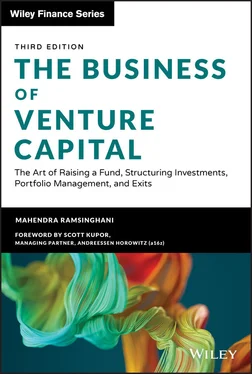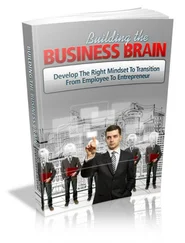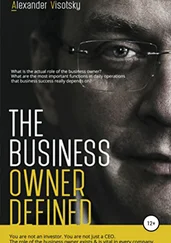1 ...6 7 8 10 11 12 ...22 As they say, any fool can write a check, but it takes some skill (and luck) to generate financial returns. To select and win the right investment opportunity in a highly competitive environment calls for a blend of analytical rigor and speed, with a strong brand and network of relationships. Yet despite all the front-end challenges, almost 80 percent of all investments fail. Unproven technologies, shifting market dynamics, management team challenges, competition, and regulation can kill a company. Any venture fund's portfolio will eventually end up with a mix of successes, some average outcomes, and flameouts. A typical rule of thumb is that one-third of the portfolio companies return 5X to 10X multiple of invested capital; one-third will generate lower outcomes — say 1X to 2X of invested capital, and the final one-third of the portfolio will fail — be the scars on the back, relegated to the “experience” bucket as total losses.
Returns are measured by MOIC and IRR. While the multiple of invested capital is often touted as a metric of success, it is equally important to demonstrate speed. The IRR is a function of time. Its underlying notion of time-value of money implies that a dollar today is more valuable than a dollar tomorrow. Put a different way, time is your enemy. The faster you can sell, or exit, a portfolio company, for as high an amount, the higher the IRR. As seen in Exhibit 1.4, the holding period of an investment can have a significant impact on IRR, while the multiple on invested capital remains the same.
A fund's portfolio companies are reduced to a single line statistic — measured primarily by multiple of invested capital and gross IRR. See Exhibit 1.5.
On the surface, the business looks like a fascinating game, where you can write large checks, dole out advise to founders, and write blog posts in media touting your investment thesis. Beneath the surface, there is a fair amount of uncertainty, stress, competition, and turmoil. As Sir Michael Moritz of Sequoia Capital once said, “It is a business of a thousand soap operas.”
Exhibit 1.4 The Advantages of Shorter Holding Periods.
| Company |
Capital Invested ($m) |
Realized Value ($m) |
Holding Period (years) |
Multiple on Invested Capital (MOIC) |
Gross IRR (%) |
| Company 1 |
$1.0m |
$5.0m |
2 |
5X |
123.6 % |
| Company 2 |
$1.0m |
$5.0m |
6 |
5X |
37.9 % |
Exhibit 1.5 Fund Portfolio Returns.
| Portfolio Company |
Capital Invested ($m) |
Current Value ($m) |
Multiple on Invested Capital (MOIC) |
Gross IRR |
| Company A |
$6.50 |
$39.20 |
6.08X |
60.60 % |
| Company B |
$2.10 |
$2.10 |
1X |
0.00 % |
| Company C |
$9.60 |
$33.10 |
3.8X |
46.20 % |
| Company D |
$6.80 |
$0.60 |
0.09X |
–53.00 % |
| Fund |
$25.00 |
$75.00 |
3.00X |
51.2 % |
Launching a venture firm requires:
A bold vision aligned with market forces
Compelling and timely investment strategy
Investment performance/track record
And above all, the ability to be persuasive
1 1. “SoftBank: Inside the ‘Wild West’ $100bn Fund Shaking up the Tech World,” Financial Times, June 19, 2018: https://www.ft.com/content/71ad7cda-6ef4-11e8-92d3-6c13e5c92914.
2 Why Choose a Career in VC
Fueling the frontiers of innovation, being an agent of change, supporting the next generation founders, asymmetric financial gains, freedom/autonomy from the 9-to-5 drudgery, or the thrill of building companies — the role of venture capitalists is never dull. If anything, it is like a drug — easy to get hooked and high, harder to let go.
One of the influential economists, Joseph Schumpeter, coined the term creative destruction, where industries are decimated when innovative trends occur: The “ gale of creative destruction ” whips through the “process of industrial mutation that incessantly revolutionizes the economic structure from within, incessantly destroying the old one, incessantly creating a new one.” On the other side are where the forces of creative construction, entrepreneurs and venture capitalists, are at work. When a paradigm shift occurs in any technological ecosystem, it is more likely that a founder and some venture capital investors are stoking that disruptive entrepreneurial fire. “See, venture capital is reducible to a few words. You have to be interested in managing change, and you have to recognize that change is necessary ,” 1 says Donald T. Valentine, founder of Sequoia Capital. To be a part of creating that new new thing can be immensely satisfying.
A career in venture capital investing is “the most fun you can have with your clothes on,” says Deepak Kamra of Canaan Partners. 2 A day in the life of a venture capitalist is full of stimulating conversations with entrepreneurs who are changing the world. At various points in their startup journey, entrepreneurs seek investors, not only for the moolah but to test assumptions, validate their concepts, and prepare for the road ahead. Amid all these caffeine-laden dreams, the investor is exposed to a steep learning curve of technological changes, the shifting sands of market dynamics, sources of opportunity, and competitive constraints. For those who thrive on comfort in ambiguity, a rapid pace, headbutting with type A entrepreneurs, and “those crazy ones,” the career path of venture capital offers it all. Elizabeth “Beezer” Clarkson, managing director of Sapphire Ventures, says, “We forget how unusual this career is. We are privileged. Other sectors seem pale in comparison when we look at the range of energy and creativity that flows to us. It can be addictive.”
Those who have had a successful entrepreneurial journey often see venture capital as a pathway of imparting their lessons to the founders and entrepreneurs. “At a certain point in your career, it is more satisfying to help entrepreneurs than to be one,” says Marc Andreessen, co-founder of Andreessen Horowitz. 3 Scott Weiss joined Andreessen Horowitz after selling his company, IronPort Systems, to Cisco. “Being a venture capitalist gives me the opportunity to mentor and offer direction to the entrepreneurs. They trust my judgment because I have been down this path before,” he points out. Several practitioners agreed that the VC career path allows them to continue to live vicariously through supporting other entrepreneurs.
Venture capital is an “antifragile” career with fundamental asymmetry. Hourly wage earners get paid for time, not value. This may be one of the few career paths that offer exponential financial returns while bringing innovation and positive change to society. In his book Antifragile , author Nicholas Naseem Taleb defines asymmetry to be when you have more upside than downside and tend to gain from volatility, randomness, stressors, errors, time, and uncertainty. Venture capitalists thrive on information asymmetry. They have a ringside view of the technological future, and the companies they have funded are often the ones to become the next-generation behemoths. Financial gains are expected as a byproduct of value creation, but only after asymmetry is identified and realized.
Читать дальше












